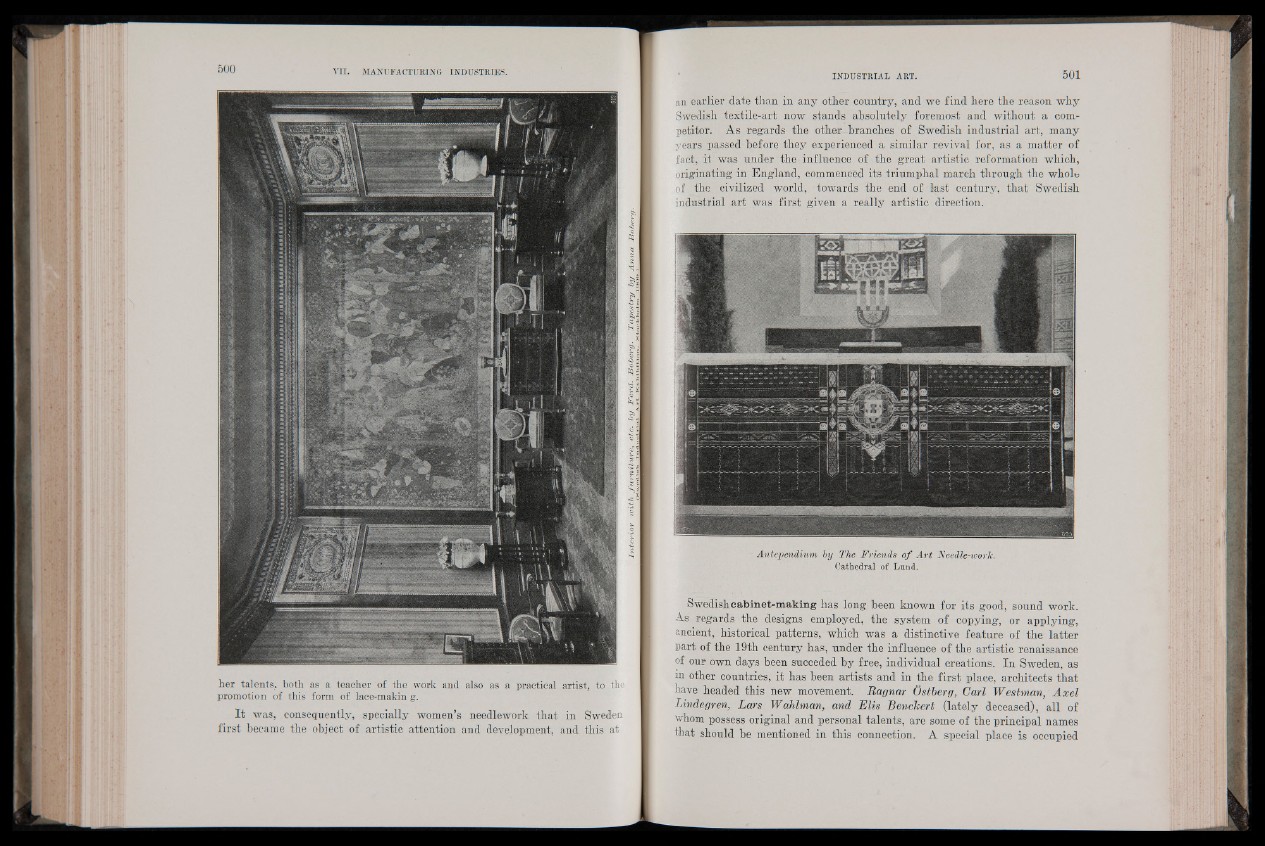
her talents, both as a teacher of the work and also as a practical artist, to th e
promotion of this form of lace-makin g.
I t was, consequently, specially women’s needlework that in Sweden
first became the object of artistic attention and development, and this at
an earlier date than in any other country, and we find here the reason why
Swedish textile.-art now stands absolutely foremost and without a competitor.
As regards the other branches of Swedish industrial art, many
years passed before they experienced a similar revival for, as a matter of
fact, it was under the influence of the great artistic reformation which,
originating in England, commenced its triumphal march through the whole
of the civilized world, towards the end of last century, that Swedish
industrial art was first given a really artistic direction.
Antependium by The Friends o f A rt Needle-worjc.
Cathedral of Land.
Swedishcabinet-making has long been known for its good, sound work.
As regards the designs employed, the system of copying, or applying,
ancient, historical patterns, which was a distinctive feature of the latter
part of the 19th century has, under the influence of the artistic renaissance
of our own days been succeded by free, individual creations. In Sweden, as
in other countries, it has been artists and in the first place, architects that
have headed this hew movement. Ragnar Ostberg, Carl Westman, Axel
Lindegren, Lars Wahlman, and Elis Benckert (lately deceased), all of
whom possess original and personal talents, are some of the principal names
that should be mentioned in this connection. A special place is occupied